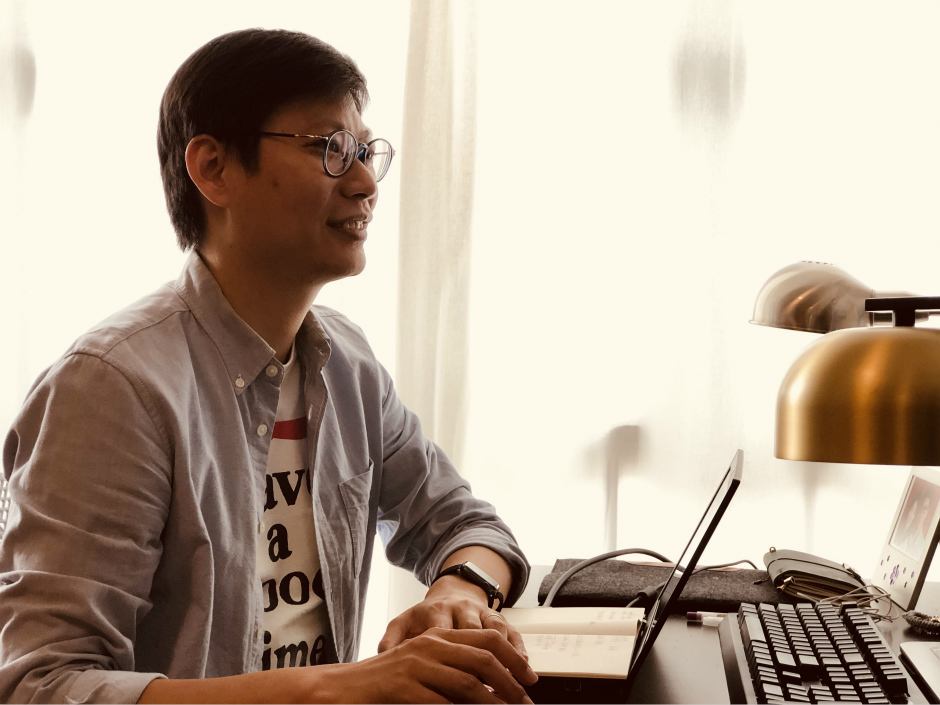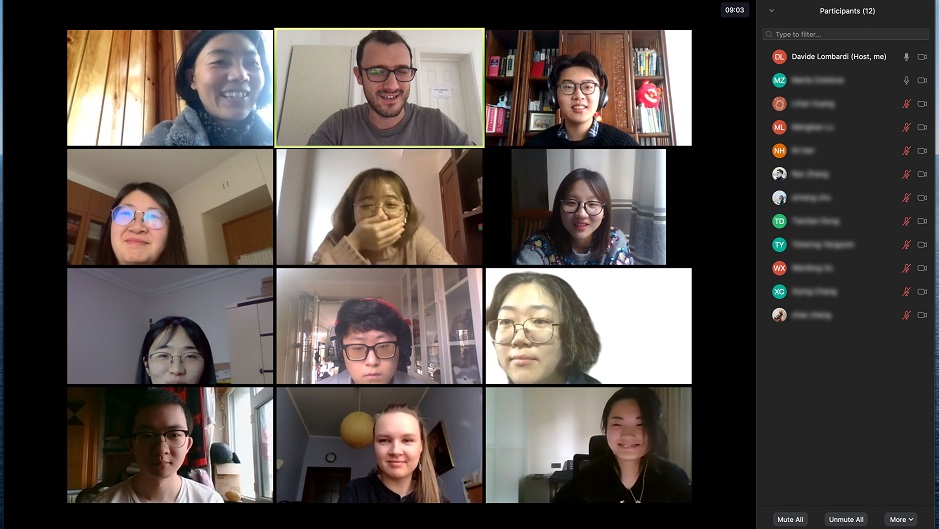30 Mar 2020
Second in a two-part series. Part one here.

Dr Chun Zhao, XJTLU's Department of Electrical and Electronic Engineering
After stepping off into the unknown of emergency, all-online teaching a month ago, educators at Xi’an Jiaotong-Liverpool University report that module objectives are being achieved and future onsite classes may never be the same.
What was the key to this success? Instructors interviewed noted they carefully considered content delivery and adjusted learning plans accordingly.
When planning his module, Dr Chun Zhao of XJTLU’s Department of Electrical and Electronic Engineering took a leaf from the students’ book.
“I researched the technology, entertainment and communication methods popular with young people. I have incorporated elements of these in my online delivery of a technology course to make the module lively and engaging,” he said.
Students’ familiarity with livestreaming helped Dr Cheng-Hung Lo, of the University’s School of Film and TV Arts, make his decision to deliver classes live rather than record in advance.
“I chose to go with live sessions rather than recorded video - most of our students were born in the digital era and are accustomed to watching live broadcast on social networks and video sharing platforms. I find it closer to the physical classroom teaching experience. You can improvise a bit, go with the flow, and talk more naturally. There’s also still a real-time connection with the students, even though it is virtual,” he said.
There’s a different rhythm to account for with online instruction compared to onsite, instructors noted.
“We have to consider the order of contact and the order of response,” said Dr Anna Y. Tian of XJTLU’s International Business School Suzhou.
“I can no longer see students’ faces in person or walk up to them to ask what they think, and in the virtual environment they need to take turns responding to a question I might pose. However, by redesigning the course to take advantage of the online techniques we have been provided, the learning outcomes are achieved,” she said.
Both Dr Eduardo Medina of XJTLU’s Department of Health and Environmental Sciences and Professor Roberto Donà of International Business School Suzhou have found benefits in combining ways for students to learn on their own and at the same time.
“The online mode of teaching relies more on students’ independent learning,” said Dr Medina.
“Therefore, I restructured what were previously face-to-face lectures into both synchronous and asynchronous activities to guide this independent learning,” he said.
"At the beginning of the week, students read materials in advance of a lecture and then discuss and exchange views in online study group forums. In the middle of the week, they watch a pre-recorded lecture. At the end of the week, we have synchronous discussions and exchanges, arriving at common conclusions or summaries of the offline activities."
Professor Donà also asks students to study material for his masters level module offline – both text and video clips – and then answer questions or take quizzes on the learning platform in preparation for later synchronous discussion.
”I don’t use the virtual classroom to deliver content, I use it to discuss content,” he said.
“The students are obliged to study to prepare themselves and we have the entire virtual class period to discuss. By combining synchronous and asynchronous classes, I am not just replacing the physical class, I can enhance the course.”

Professor Roberto Donà, XJTLU's International Business School Suzhou,and his master's level Business Leadership course
Students in an elective, two-week online course taught just before all modules moved online were highly active, producing hundreds of discussion forum messages, noted Dr Qian Wang of XJTLU’s Institute of Leadership and Education Advanced Development (ILEAD).
“Seeing how actively students communicated and bounced ideas off each other in offline discussion groups was exciting and rewarding,” said Dr Wang.
Several of the educators interviewed have found benefits from online technology to incorporate in face-to-face classes in the future.
Live online sessions can be a good way to teach use of software, Dr Lo of SOFTA noted.
“I can use screensharing functions to demonstrate in a lively and engaging manner, and I can connect a digital drawing pad to my computer to literally turn my desktop into a whiteboard,” he said.
Dr Medina discovered a method to ensure students read material before lectures.
“Asking students to discuss pre-readings for lectures in online forums has turned out to be a good way to ensure accountability,” he said.
Dr Zhao has found that having students respond to his questions in a chat window during a live class has helped him narrow in on where to focus.
“I can immediately understand what knowledge points the students have questions about. I can learn more directly what topics they need more information on and which they need me to explain from a different angle,” he said.
Professor Donà said he appreciates how technology can even the level of knowledge among students in a module.
“Instead of my taking 20-30 minutes to explain a theory in a class of 50 where some students already know it, technology can allow those who don’t to drill into that information via a computer application. I then have more time to spend doing individual coaching,” he said.
“Now that we have had this experience with online teaching, I don’t think we will ever go back entirely to the way we taught before.”

Dr Anna Y. Tian, XJTLU’s International Business School Suzhou

Dr Cheng-Hung Lo, XJTLU's School of Film and TV Arts
By Tamara Kaup and Luyun Shi
30 Mar 2020
RELATED NEWS

Making emergency online classes work – we did it, you can too
First in a two-part series. Part two here. Moving to all-online instruction takes effort, but if our experience is an example, take heart, it will go just f...
Learn more







